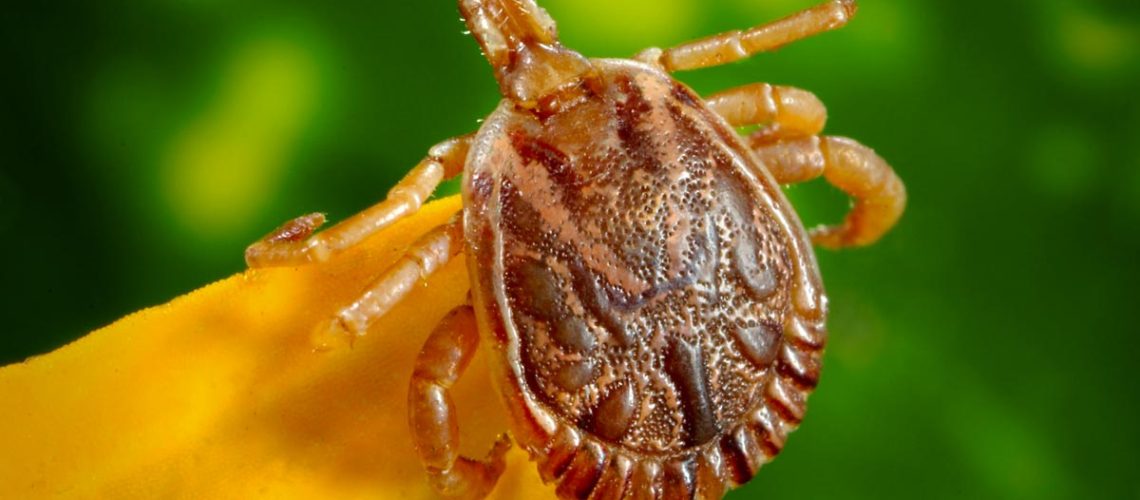What are ticks?
Ticks are blood-feeding parasites that are often found in tall grass where they will wait to attach to a passing host. They have eight legs and look like small spiders-a few millimeters long when they first jump onto a host. After feeding, by sucking the host’s blood for a few days, they can become as large as a small grape. There are many species of tick here in the Okanagan, of which common ones are the Blacklegged/Deer tick (Ixodes Scapularis), the Western Blacklegged tick(Ixodes Pacificus), the American dog tick (Dermacentor Variabilis), the Rocky Mountain Wood tick (Dermacentor Andersoni) and the Brown dog tick (Rhipicephalus sanguineus). (pictured above)
How does my pet get ticks?
Ticks live in long grass and bush and jump onto their hosts when they walk by and brush against them. They then crawl to their prefered areas, the head, neck, ears and feet but in severe infestations can be found over the whole body.
When is Tick Season?
Tick season starts as soon as the snow leaves the ground and one of our clients has already found one on his dog this year. Ticks are worse in the spring and the fall, when the weather is damper, but are around all year, until the freezing temperatures and snow start again.
How can I tell if my pet has ticks?
Ticks are visible to the naked eye. They attach to the skin of your dog and will resemble a small, smooth wart or blood blister. During the warmer months, it’s a good idea to check your dog regularly for these parasites. If you do spot a tick, it is important to take care when removing it. Treat the area with rubbing alcohol and pluck the parasite with tweezers, making sure you’ve gotten the biting head and other body parts. Since it may only take a few hours for disease to be transmitted from an attached tick, it is ideal for your dog to be evaluated by a veterinarian soon after any ticks are found.
What do I do if I find a tick on my pet?
Grasp it as close to the skin as possible with tweezers. Special tick removal instruments are available to help in their removal. Gently and steadily pull away from the skin, trying not to leave any of the head under the skin as this can lead to swelling and secondary infection. If this happens let a veterinarian check out the site and advise on the best course of treatment. After removal disinfect the area with some alcohol.
What Are Some Complications Associated with Ticks in Dogs?
Ticks can also transmit diseases such as Lyme disease, ehrlichiosis and Rocky Mountain spotted fever, all of which can cause serious complications and are potentially fatal without prompt and proper treatment. Another serious condition that can occur is Tick Bite Paralysis, where the tick bite introduces a neurotoxin that causes the host to become progressively paralysed. Contact your Veterinarian if you find an embedded tick and are unable to remove it, or if you note any changes in your pet’s behavior or health.
How can I protect my pet from ticks?
It takes at least 24 hours before a tick will become attached to your pet and start feeding, which gives time to carefully check through your pet’s coat after a days hiking in tick habitat, when it should be possible to find any ticks before they become attached and start to cause problems. A fine comb will help where the coat is thick or long. One of the most effective ways to keep ticks off your dog is to directly apply a tick prevention product specifically designed for dogs. Topical products like Revolution and Advantix are designed to be applied monthly to prevent ticks.
Exciting news in tick prevention is the arrival of Bravecto which is an oral chewable tablet that gives protection against ticks for 8 weeks. Our suggestion for tick control is to use both Revolution, monthly, for its broad spectrum action against multiple parasites and Bravecto every 8 weeks during tick season.

